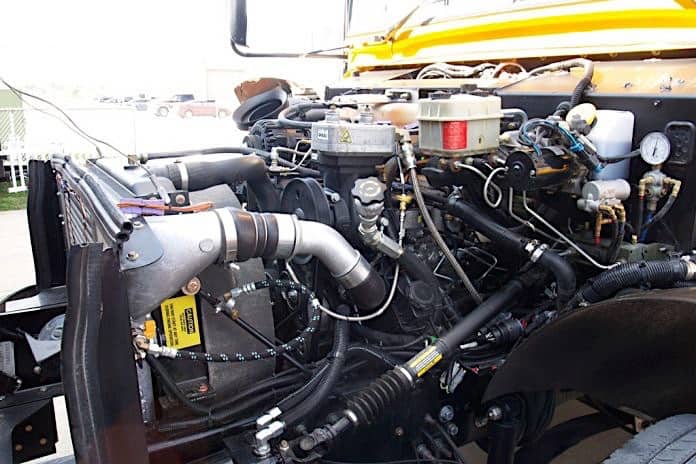While the public comment period for the proposed Phase 2 Greenhouse Gas Emissions and Fuel Efficiency Standards for Medium- and Heavy-Duty Engines and Vehicles will extend for the next three months, initial reaction has already begun to surface on what the extensive plan means for engine and vehicle manufacturers over the next several years.
While all parties have said they look forward to more thoroughly reviewing the thousands of pages of proposed rules, industry insiders are saying that there is a lot to accomplish within the next five to six years to reach what the feds are calling “ambitious yet achievable” standards, namely ensuring a final rule does not overstep. Manufacturers face the stiff challenge of meeting 16-percent reductions in not only GHGs but vehicle weight starting with model year 2021 and extending through 2027 for most applications.
EPA and NHTSA are also promising that the rule will result in $230 billion in “net benefits” over the lifetime of the new vehicles sold while costing manufacturers a tenth of that, or about $25 billion, over the same regulatory timeframe. Still, that’s a hefty price tag that will need to be absorbed somehow, specifically passed on to customers.
Phase 2 is also said to cut GHG emissions by approximately 1 billion metric tons and conserve about 1.8 billion barrels of oil over the lifetime of the vehicles sold under the program. The feds also said that Phase 2 would save vehicle owners about $170 billion in fuel costs over the lifetime of the vehicles sold in the regulatory timeframe.
The Engine Manufacturers Association said the success of Phase 1 implementation starting four years ago was a result of standards that “were well aligned with EMA member efforts to meet customer demand for more fuel efficient vehicles,” said Jed Mandel, the organization’s president. He explained that EMA wants to ensure the latest proposal includes adequate lead-time, is compatible with the commercial engine and vehicle marketplace, relies on proven technology and avoids the dreaded “unintended consequences.”
“We look forward to reviewing the current proposal to ensure that the EPA and DOT Phase 2 proposal continues to align with manufacturers’ efforts and customer needs,” he added.
Allen Schaeffer, executive director of the Clean Diesel Technology Forum, said manufacturers are poised to continue working with EPA, NHTSA and the California Air Resources Board “toward a final rule that will enable continued progress in investing in new and more fuel efficient vehicles.” A study commissioned by the Forum and conducted by the Martec Group in Detroit claims that Classes 3-8 vehicles on the road from 2007 through 2014 saved 880 million gallons of diesel fuel, and 9 million tons of carbon dioxide.
Cummins Inc. said much of the same technology that helped the company become the first engine manufacturer to meet current Phase 1 emissions rules will find its way into production engines regulated by the new standards. Cummins added that it welcomed the proposal and would continue to “put customers first” in its mission to realize increased fuel economy and reduced emissions.
Meanwhile, Daimler Trucks North America, the parent company of Thomas Built Buses, told STN that a final rule should be both realistic and cost-efficient in how it affects vehicle production and operating conditions.
“We have provided the EPA and NHTSA with information about the fuel-saving potential of many technologies, as well as their relative cost and affordability for our customers,” said Sean Waters, director of DTNA product compliance and regulatory affairs. “We are just beginning to review the details of the NPRM and will continue to work with EPA and NHTSA on developing a final rule consistent with our goals of providing emissions and fuel economy benefits that reduce the real cost of ownership for our customers.”
Navistar, the parent of IC Buses, said it needs more time to review the entire NPRM, but added that it looks forward to providing feedback “to ensure the rule helps drive real-world GHG reductions and fuel efficiency improvements through achievable technology advancements that provide a reasonable return-on-investment for our customers.”
A final rule is expected next year.















